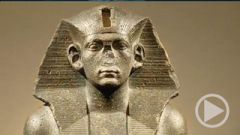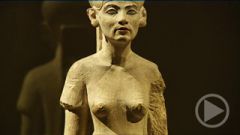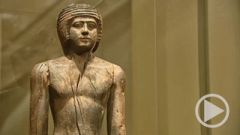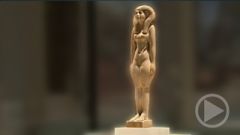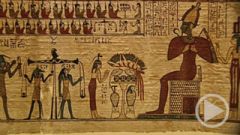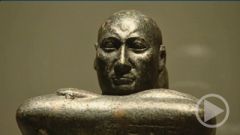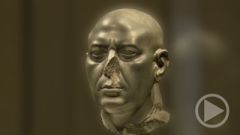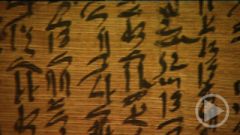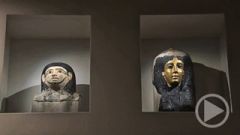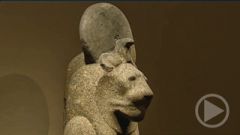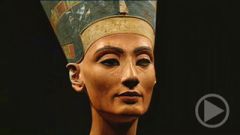- Home
- »
- Germany
- »
- Berlin
- »
- Museum Island
- »
- The Berlin Egyptian Museum
- »
- The Berlin Egyptian Museum - Naga Reliefs
Naga Reliefs
Naga Reliefs
Three large segments of sandstone wall, each reaching from floor to ceiling, depict four gods in sunken relief. To the far left, a goddess with winged arms, to the far right a lion-headed god and on the right side of the central segment, a goddess holding severed hands as a trophy. The African features of the winged goddess to the far left, the compact proportions of the figures as well as their vividly patterned clothing are typical characteristics for the art of the Meroitic Kingdom, which ruled the north of Sudan in the centuries before and after the beginning of the common era. These characteristics, combined with stylistic principles of Egyptian art, form a style of their own, which serves as a bridge between the Mediterranean world and Africa.
In 2008, the large relief segments came to Berlin as long-term loans from the Republic of Sudan. The stone slabs were excavated between 2005 and 2008 in Naga, a desert town in the north of Sudan, during an expedition by the Egyptian Museum Berlin. With the excavations in Naga, the German Research Foundation and the Society for the Promotion of the Egyptian Museum Berlin have made an important contribution to the promotion of the historical and cultural identity of Sudan. By giving the reliefs on loan to the museum, the host nation has shown its approval of the cooperation, while Berlin has been able to fortify its standing as one of the few collections of ancient Sudanese art.


